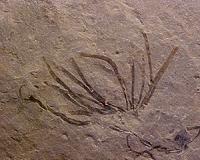| . |  |
. |
Kathmandu (AFP) Jan 23, 2011 An injured wild tiger that strayed into a tourist resort in Nepal has been moved to a new home in the jungle and fitted with a satellite collar so its progress can be tracked, the government said. The tiger, an adult male, was captured after it wandered into the resort on the outskirts of the Chitwan national park in southern Nepal, a major tourist attraction, and nursed back to health by park authorities. It was then driven about 600 kilometres (400 miles) with a team of vets and conservationists in a specially constructed trailer to the remote jungles of Bardia in western Nepal, where it was released on Saturday. The tiger, named Namobuddha by park authorities, has been fitted with a special collar carrying a GPS tracking system that will allow scientists to monitor how well it adapts to its new home. The government said the initiative, carried out with the help of experts from WWF, would also help to improve understanding of how the endangered animals behave in the wild. "This translocation -- the first of its kind in Nepal -- is a concrete example of our commitment to saving wild tigers using the best science available," said Deepak Bohara, minister of forest and soil conservation. The project is part of Nepal's efforts to double its population of Royal Bengal tigers, which once roamed the country's southern plains in large numbers but have been depleted by poaching and the destruction of their habitat. A WWF survey carried out in 2008 found just 121 adult tigers of breeding age in the country. Krishna Acharya, Nepal's head of national parks and wildlife conservation, said Bardia was an ideal home for the animal because it of its vast size, available prey and relatively low levels of poaching. "Nepal is one of the countries in the world where the prospect of doubling the tiger population is quite good, if tigers are given enough space, prey and proper protection," he added. Experts say poverty and political instability in Nepal have created ideal conditions for poachers who kill the animals for their skin, meat and bones, which are highly valued in Chinese traditional medicine. The WWF says tigers are in serious danger of becoming extinct in the wild. During the last 100 years their numbers have collapsed by 95 percent, from 100,000 in 1900 to only around 3,200 tigers, its says.
earlier related report The two subspecies of Sunda leopard -- which was only identified as a species in its own right in 2007 -- must now be managed differently, said a report by Andres Wilting from the Leibniz Institute for Zoo and Wildlife Research and researchers from the Sabah wildlife and forestry departments. "The Sunda clouded leopard in Borneo and Sumatra is a different species from clouded leopards across the Asian mainland," Wilting told AFP. "We suspected the leopards on Borneo and Sumatra have likely been geographically separated since the last Ice Age, and we now know the long isolation has resulted in a split into separate subspecies," he added. "The potential that they could evolve into full separate species, given that they are separate subspecies, means that captive breeders will now be better informed to keep the subspecies apart to allow them to evolve fully." Wilting said that molecular analysis, genetic testing and skull morphology studies on fur and bone samples of the leopard from natural history museums worldwide showed the species followed different evolutionary paths. The researchers say natural disasters were likely responsible for the split, with only two populations of the leopards in Borneo and southern China surviving the Toba volcanic eruption in Sumatra about 75,000 years ago. "The ones on Borneo could have recolonised Sumatra via glacial land bridges and subsequently developed into a different subspecies as sea levels rose after the last Ice Age, isolating the two islands," said co-author Joerns Fickel. Wilting said both subspecies are classified as endangered by the International Union for the Conservation of Nature because the big cats occur in small numbers and need big home ranges for their survival. Researchers say the subspecies is the biggest predator on Borneo, a resource-rich island split between Malaysia and Indonesia where wildlife habitats are under pressure from logging and plantations. Last February, researchers were able for the first time to capture the leopard on film at the Dermakot Forest Reserve on Borneo.
Share This Article With Planet Earth
Related Links Darwin Today At TerraDaily.com
 Putting The Dead To Work For Conservation Biology
Putting The Dead To Work For Conservation BiologyIthaca NY (SPX) Jan 21, 2011 Conservation paleobiologists-scientists who use the fossil record to understand the evolutionary and ecological responses of present-day species to changes in their environment - are putting the dead to work. A new review of the research in this emerging field provides examples of how the fossil record can help assess environmental impact, predict which species will be most vulnerable to e ... read more |
|
| The content herein, unless otherwise known to be public domain, are Copyright 1995-2010 - SpaceDaily. AFP and UPI Wire Stories are copyright Agence France-Presse and United Press International. ESA Portal Reports are copyright European Space Agency. All NASA sourced material is public domain. Additional copyrights may apply in whole or part to other bona fide parties. Advertising does not imply endorsement,agreement or approval of any opinions, statements or information provided by SpaceDaily on any Web page published or hosted by SpaceDaily. Privacy Statement |